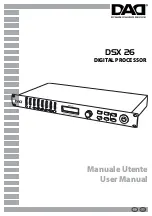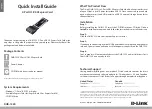
Page 11
Placing Access Points
Placing Access Points
Now let us take a look at some best practice examples of what
has been covered so far in this chapter. Physical placement of
an access point has a measurable effect on who can and
cannot access your wireless signal. Keeping outside users out
of your wireless range is often just as important as ensuring
your valid users have a strong wireless signal.
The following sections provide an overview of wireless access
point placement, signal strength, and signal direction in
common wireless deployment situations:
•
Creating a Realistic Environment
- page 11
•
Making Hardware Decisions
- page 11
•
Upgrading to 802.11n Technology
- page 12
•
Solutions to RF Interference and Barriers
- page 13
Creating a Realistic Environment
Be realistic when preparing the site for a wireless site survey.
The best time to conduct a site survey is not on a weekend or
after hours, but during a normal work day when the office is
busy. It is a good idea to include elements such as people,
closed doors, wireless test labs, and other objects that could
alter or interfere with the RF signal.
Making Hardware Decisions
The first decision in hardware is the access point. While access
point technology (802.11a/b/g/n) is one factor in determining
your placement, based on distance served and bandwidth
needed, taking note of other hardware-based factors is just as
important. Some of the more important hardware decisions
include:
•
Number of access points versus user density
– How
many wireless clients are served by one access point? If
too many users are serviced by a single access point,
maximum transfer rates are reached and that point may
become a bottleneck for the whole system. This is an
example where deciding coverage only in terms of signal
range may not be ideal.
•
Bandwidth
– This goes hand-in-hand with user density,
but also takes into consideration user type. How much data
is moving upstream and downstream for a given type of
user?
•
Ethernet cabling
– This is the point where wireless is not
actually wireless. Where are you running the powered
Ethernet (PoE) cable to and how are you securing that
cable? Also think of power requirements when running
multiple access points; is your PoE switch 802.3af
compliant and able to power all access points in your
deployment?
Содержание SonicPoint NF
Страница 3: ...Page 3 SonicPoint Front Back Panels...
Страница 7: ...Page 7...
Страница 17: ...Page 17 Registering for a Free Copy of the SonicWALL Secure Wireless Network Integrated Solutions Guide...
Страница 21: ...Page 21 Using SonicWALL UTM Security Services for Wireless Clients...
Страница 43: ...Page 43 SonicWALL Secure Wireless Network Integrated Solutions Guide...
Страница 51: ...Page 51 Trademarks...












































